CEC TL51X CD transport
The simplest belt drive transport. If you insist on "the belt thing".
Lukasz Fikus, sept 2010
After trying the CEC DAC, The TL-1 transport, the TL-1X transport, the TL0-X and
loving them all, I was exposed to another belt machine from CEC -
namely the cec TL51X.
Without thinking much I aplied to it my known and proven recipe from my
own TL-1X and namely:
6 oscons in critical power supply points on main PCB
Bypass of pulse output signal transformer
bypass of HC74XX output buffers
New direct link between the spdif forming chip and the RCA socket
The mods are relatively easy and reversible. I have done neither the
clock nor the sixpack.
Lets see this beauty stripped down a little:
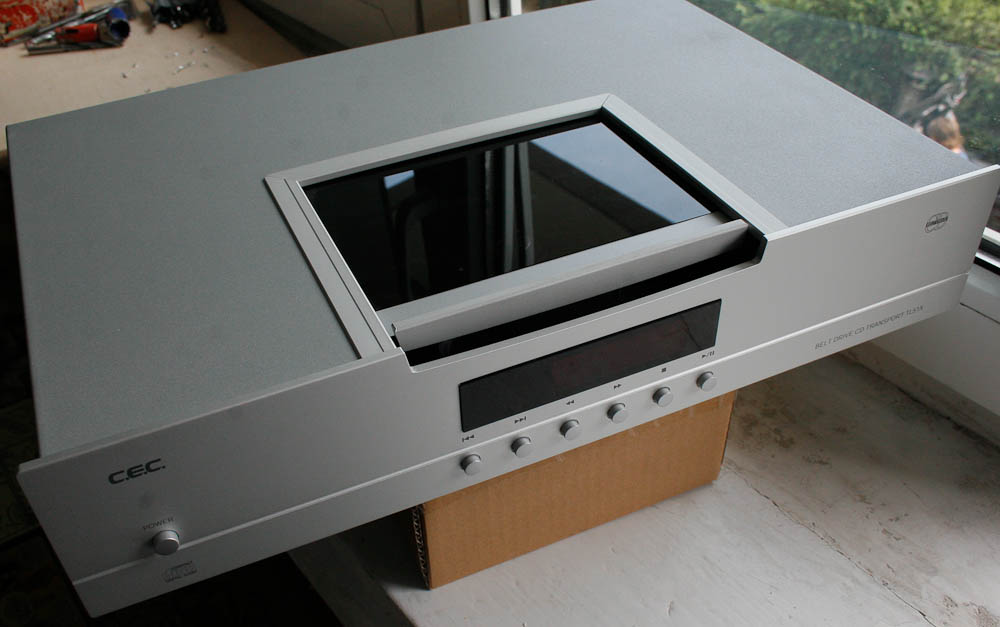
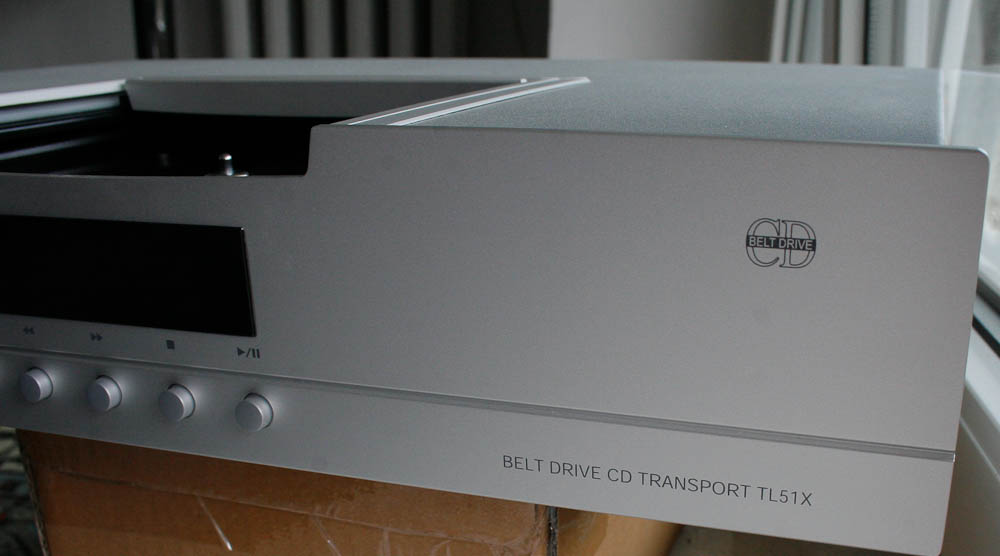
They write for you everything, as if you didn't know what it is...
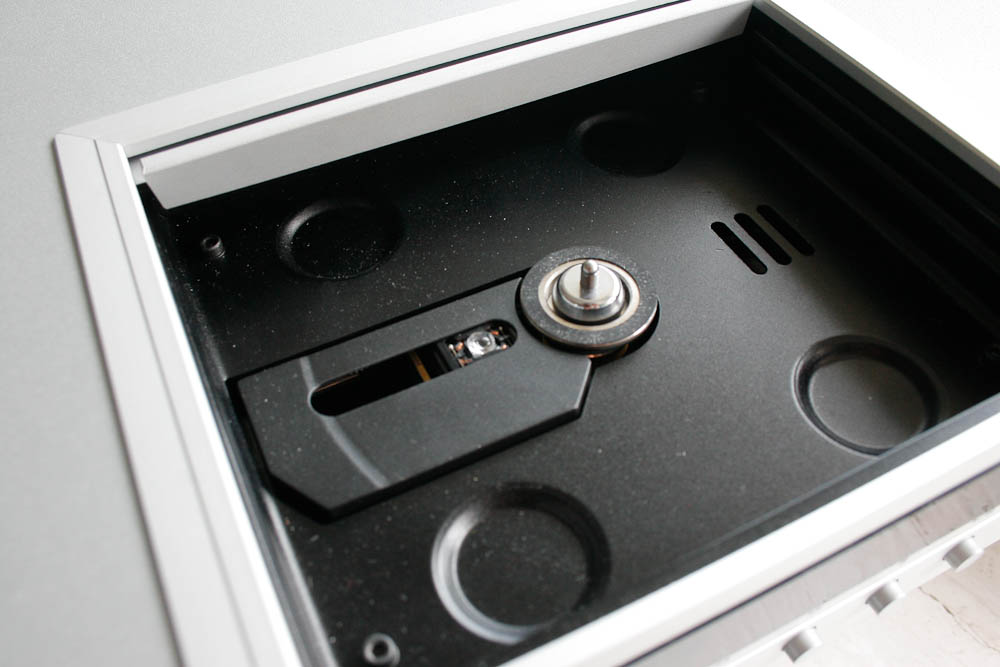
The mechanism looks almost identical to TL1X, it looks but it's not.
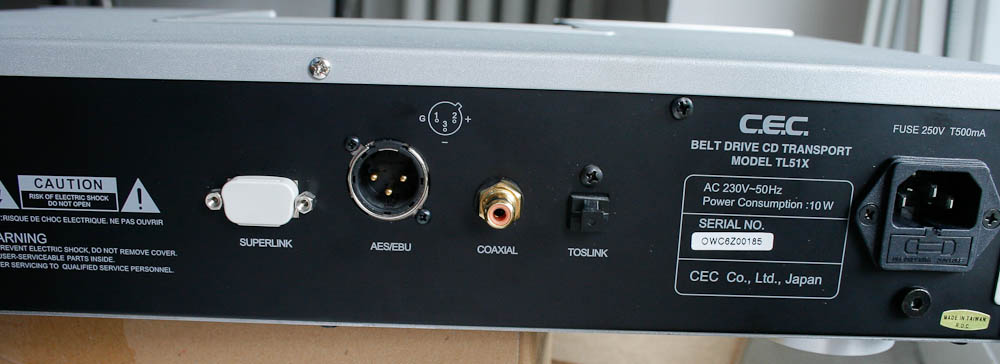
It is already made in Taiwan, and I wonder what happened to the Sanyo
brand as mother company ?
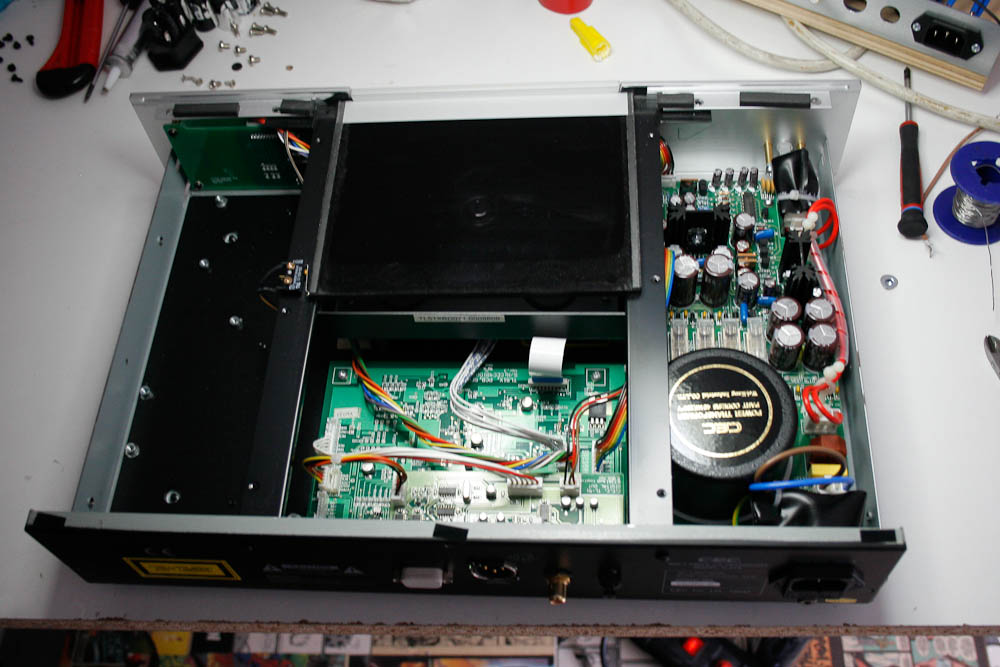
The patient on my table.
On the left there is a void, where the dac board goes if this is the CD
player. This one is transport only.
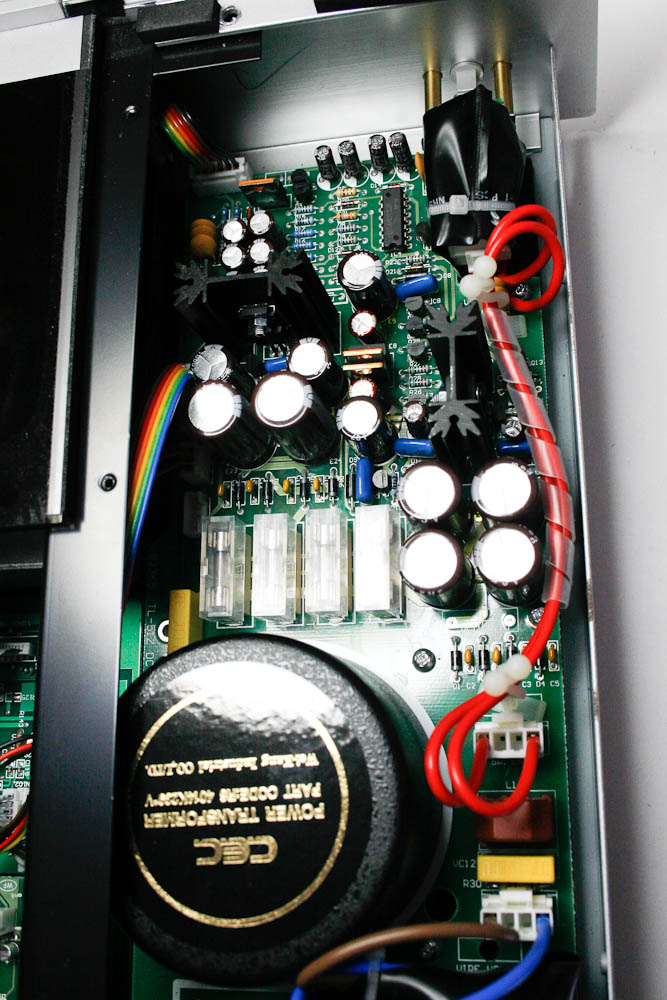
There is a massive power supply, which has AC filters and DC filters,
switchable mains (115-230) and good regulation and DC filtering. It is
a very competent supply.

Above - side view on the mechanism.
Below - for all the non believers - here it is - a belt driven spindle.
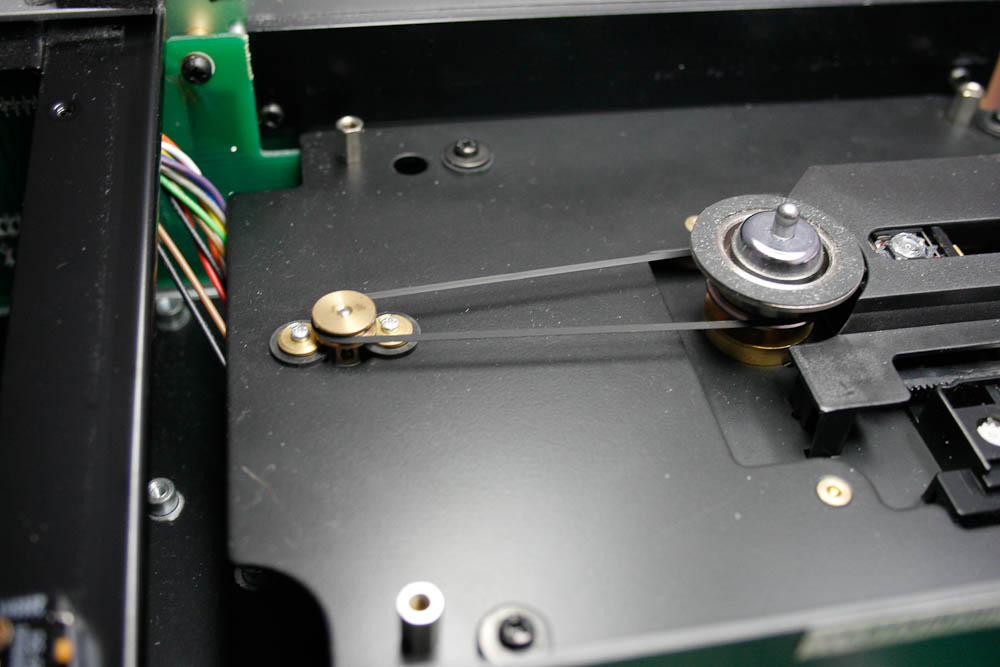
The belt drive for the spindle is there, but the tracking works on a
plastic toothed wheel. In TL1 there is also a belt to drive the
tracking rails.
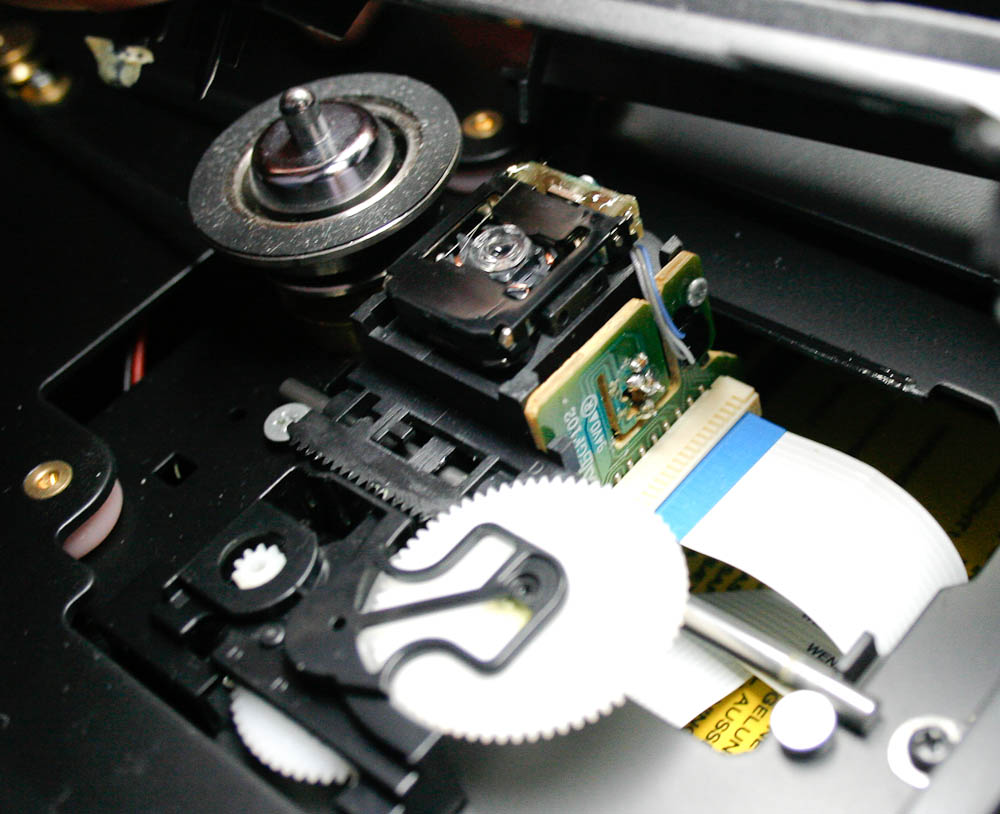
This above is a cheap and flimsy tracking and laser assembly. This is
dangerously close to the DVD standards (low).
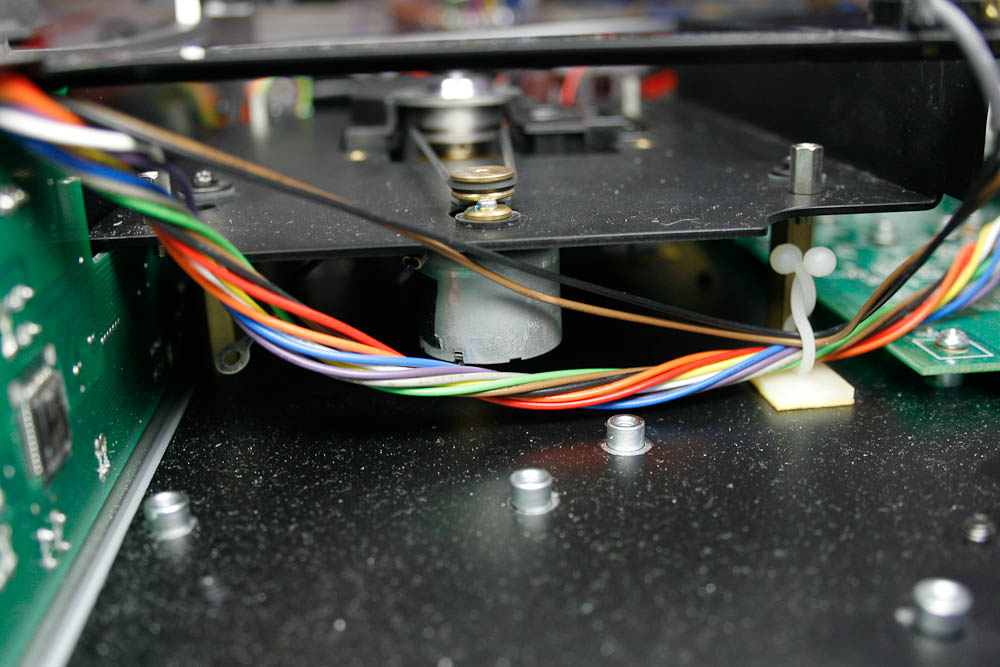
Above - cheap mabuchi motor. As I explained in TL1-X article this is a
GOOD CHOICE because the weaker the motor the better the sound.
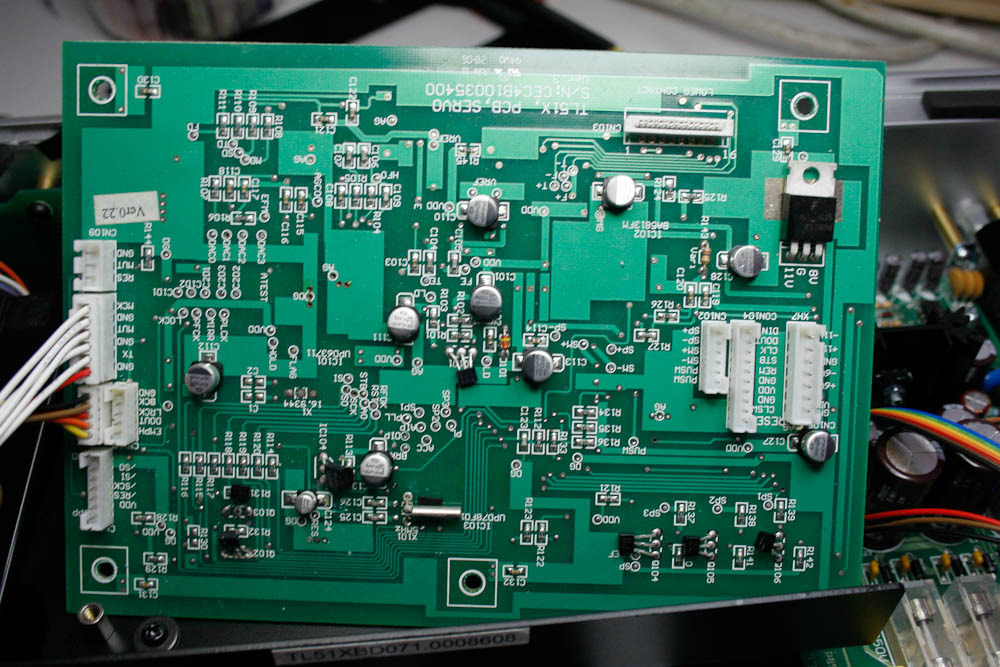
The main PCB, which is dedicated to this player. It is not an off the
shelve standard PCB.
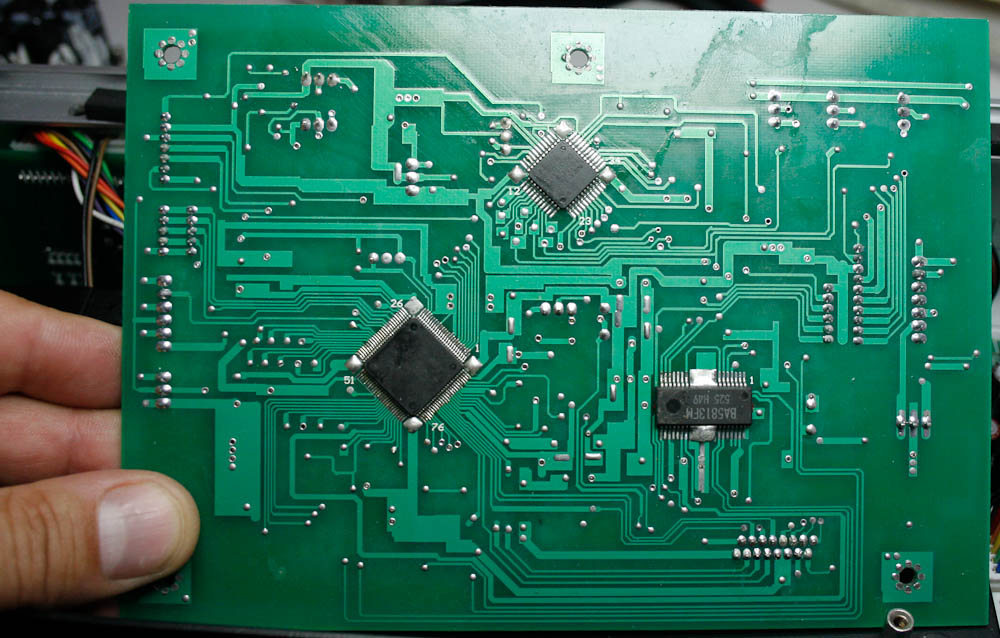
Underneath - three chips - the micro, the demodulator and the servo.
The most important one - the demodulator comes from NEC but it is pin
compatible with the Sony. So I guess it is just a Sony design.
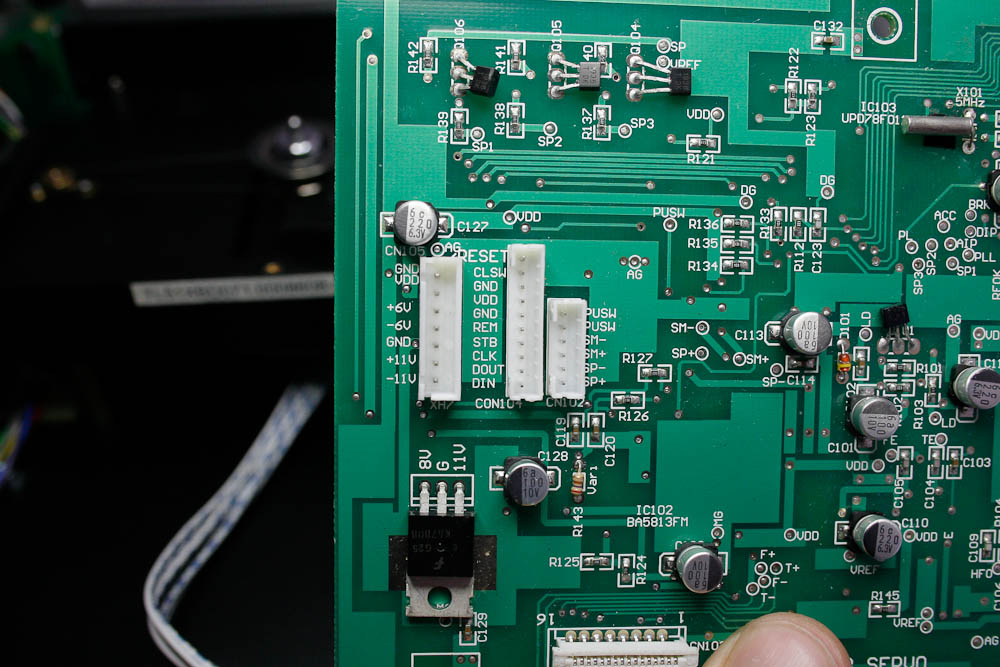
The connector silkscreen descriptors say it all.
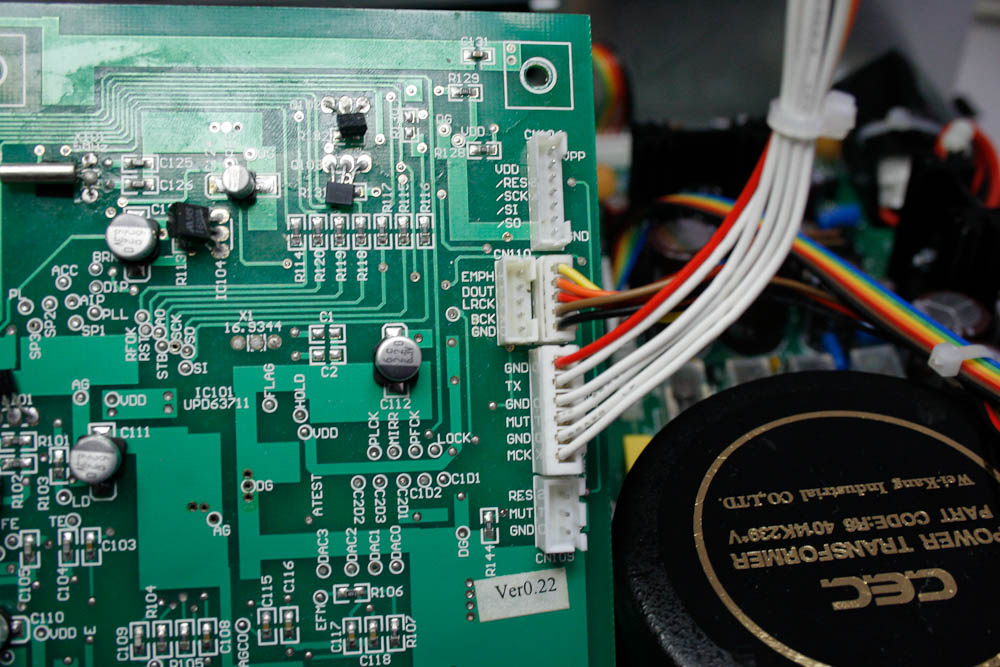
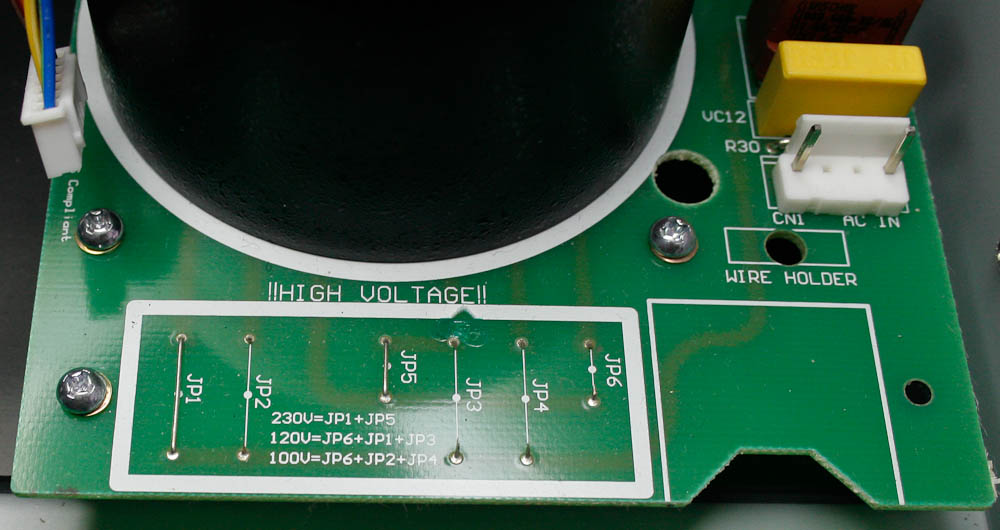
As you can see there is nothing to worry about - every cec will play in
any country, even in the right hand driving countries.
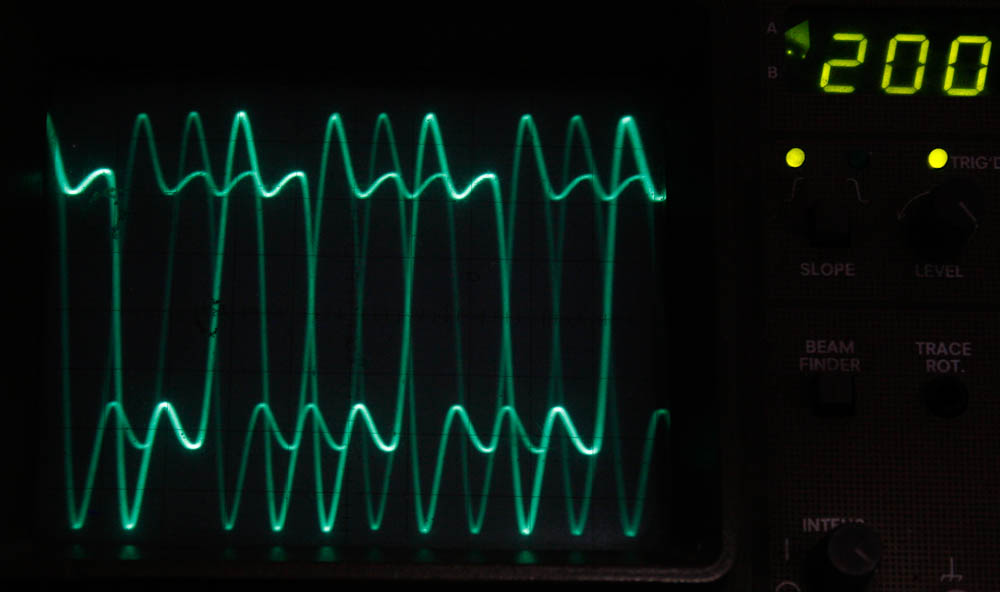
OOoops - this is the aes/ebu digital "square" trace. I mean -
before the CEC saw the doctor.
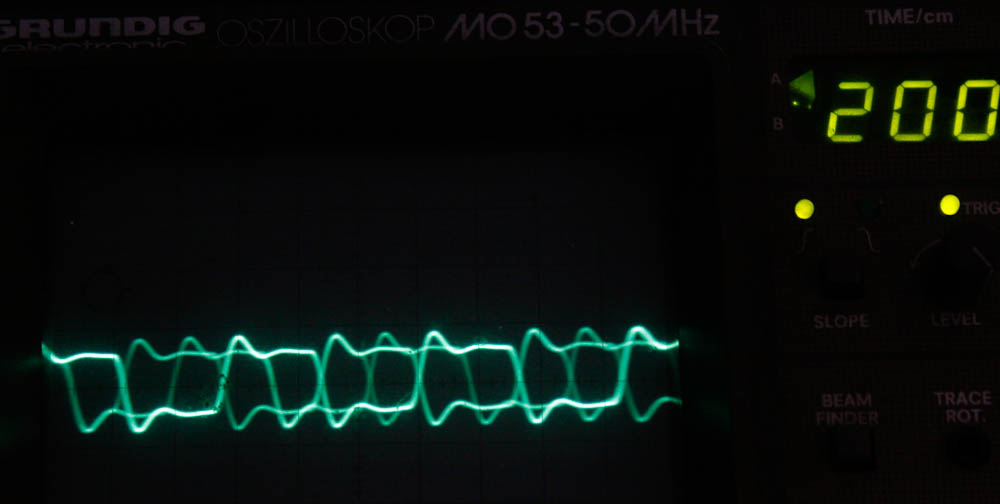
This is the S/PDIF trace - better but still not too good.
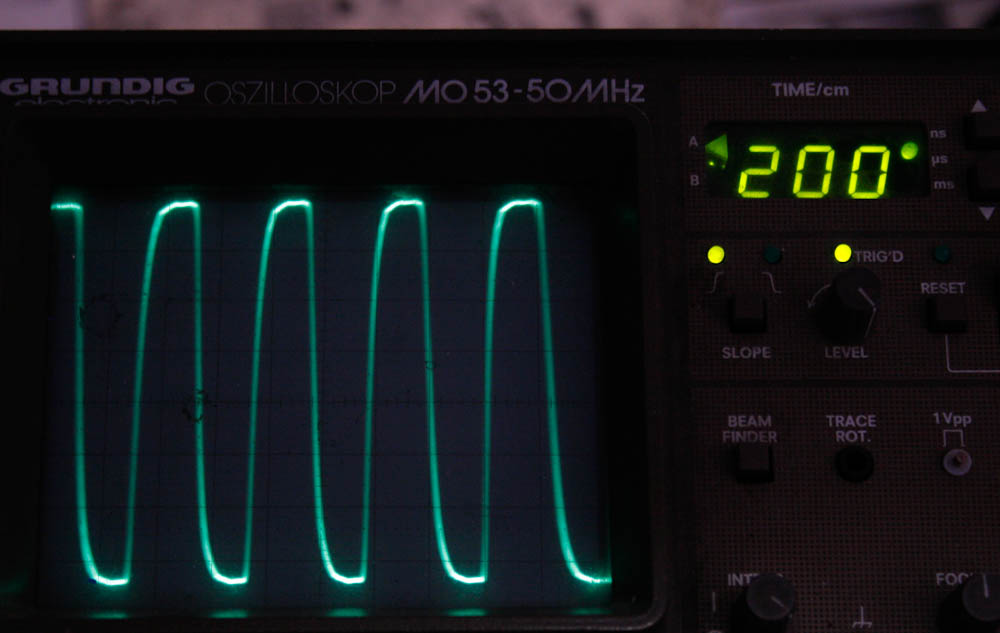
By oscilloscope I found the output directly on the black square NEC
chip. It looks promising.
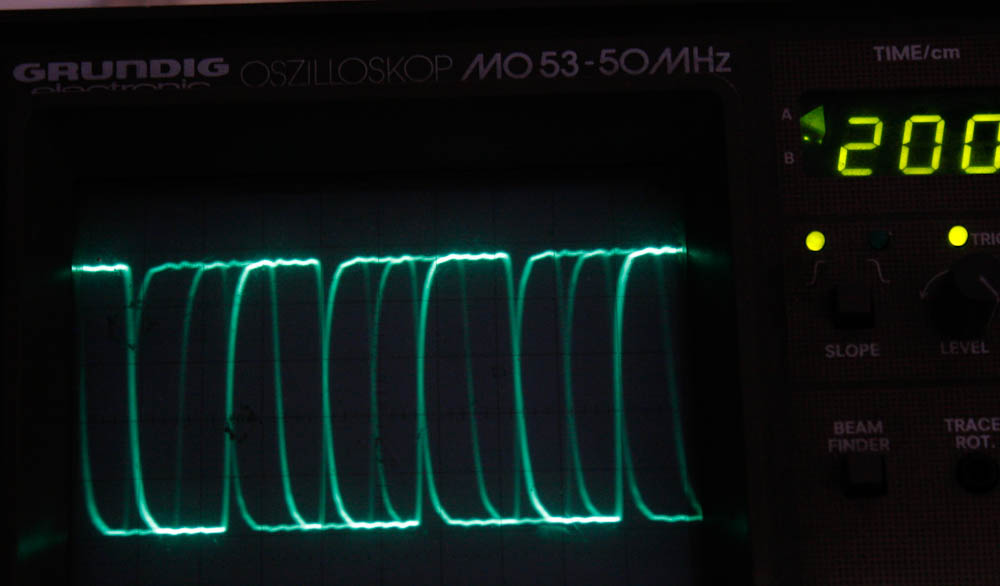
Above: after the fikus mods - the trace looked like this. (scale
doubled to show smallest wrinkles)
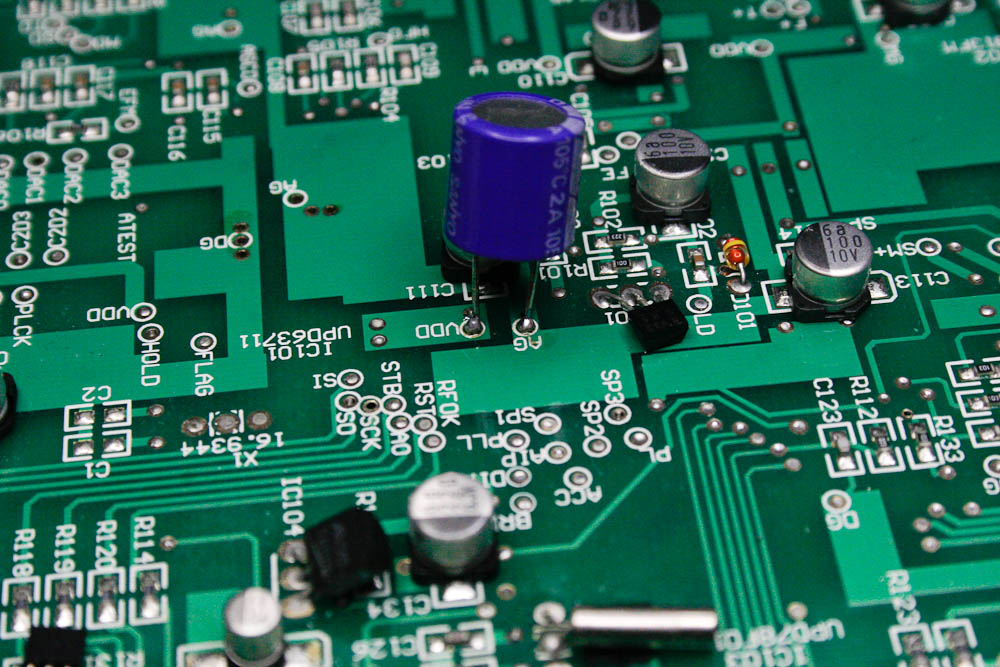
The critical points for oscons (I used the 220/10 which I have in my
drawer.
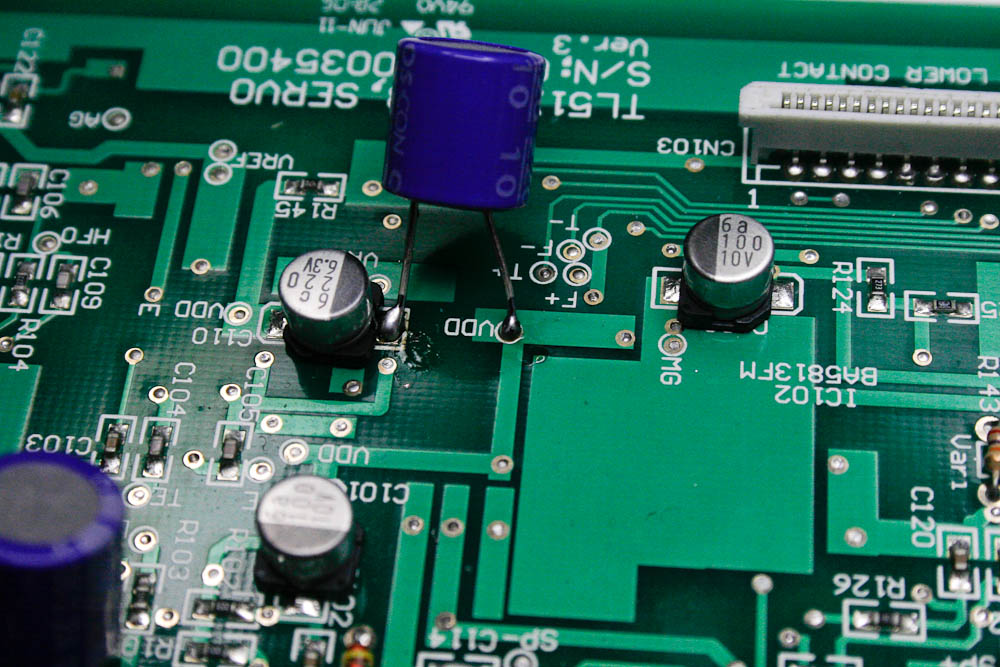
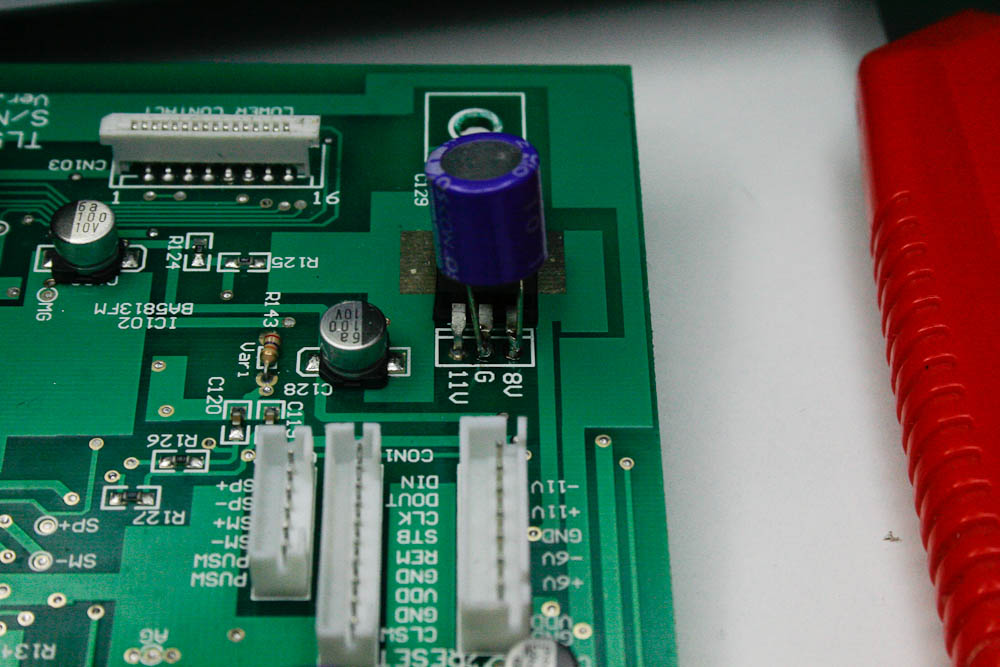
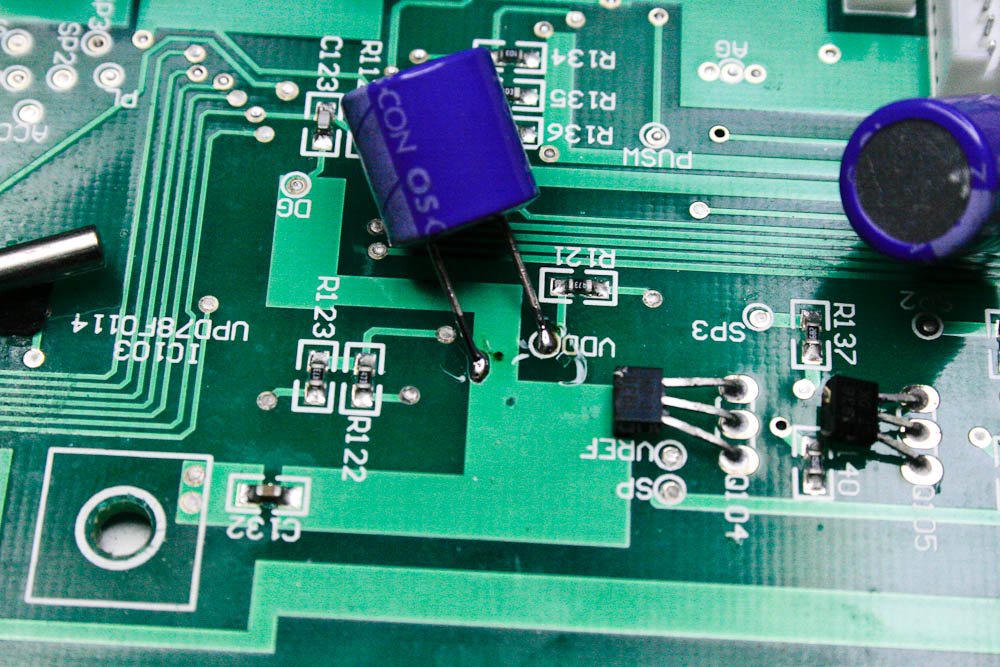
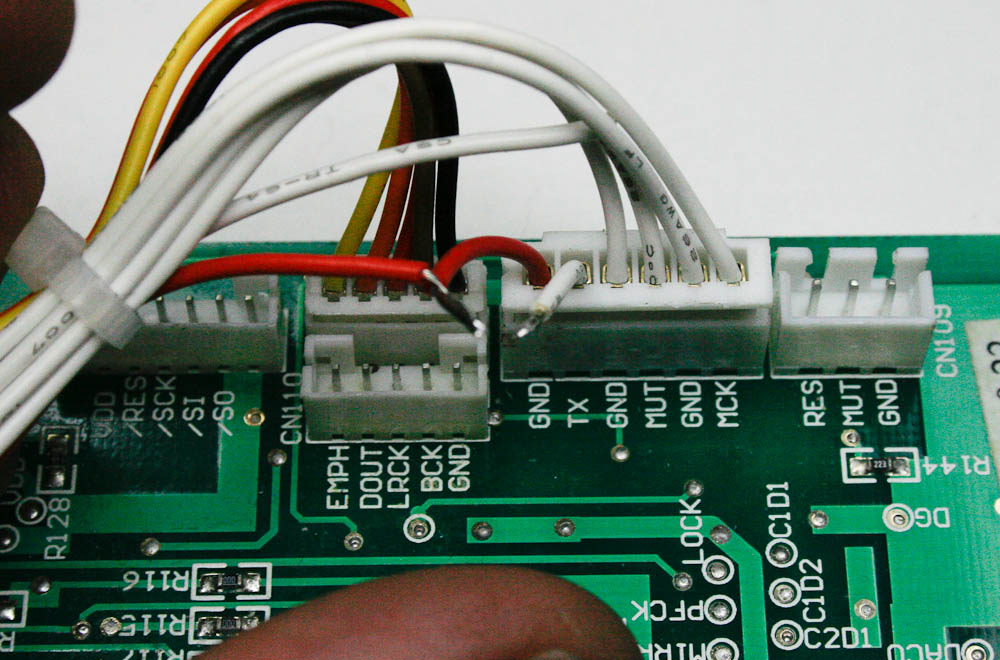
Above - to tap safely to the signal you can just cut one wire - the
white TX
Tap to it as a source of pure S/PDIF

A coax Belden installed.

Yet another oscon on the upper board which produces the clock for the
whole player.

Above: the RCA is floated - everything is removed from center pin.

Some analog filtering ceramics caps also removed from the bottom of the
PCB
All you need to do afterwards is to solder the signal to the RCA output
(coax cable.
On the RCA install first 200-300 Ohm series resistor from cable to the
hot RCA pin. Then add a 75 Ohm resistor from hot RCA to cold RCA gnd.
Put a10 nF cap between cable and the series resistor.
Path is: chip - > coax cable - > cap -> 200 Ohms series,
75 Ohms parallel, and RCA.
The result of this job is very good. This player gets an enormous
increase in transparency, detail and frequency extremes. Very
recommended.
Here is a schematics of a similar player 5100.
PDF of cec-5100
Lukasz



























